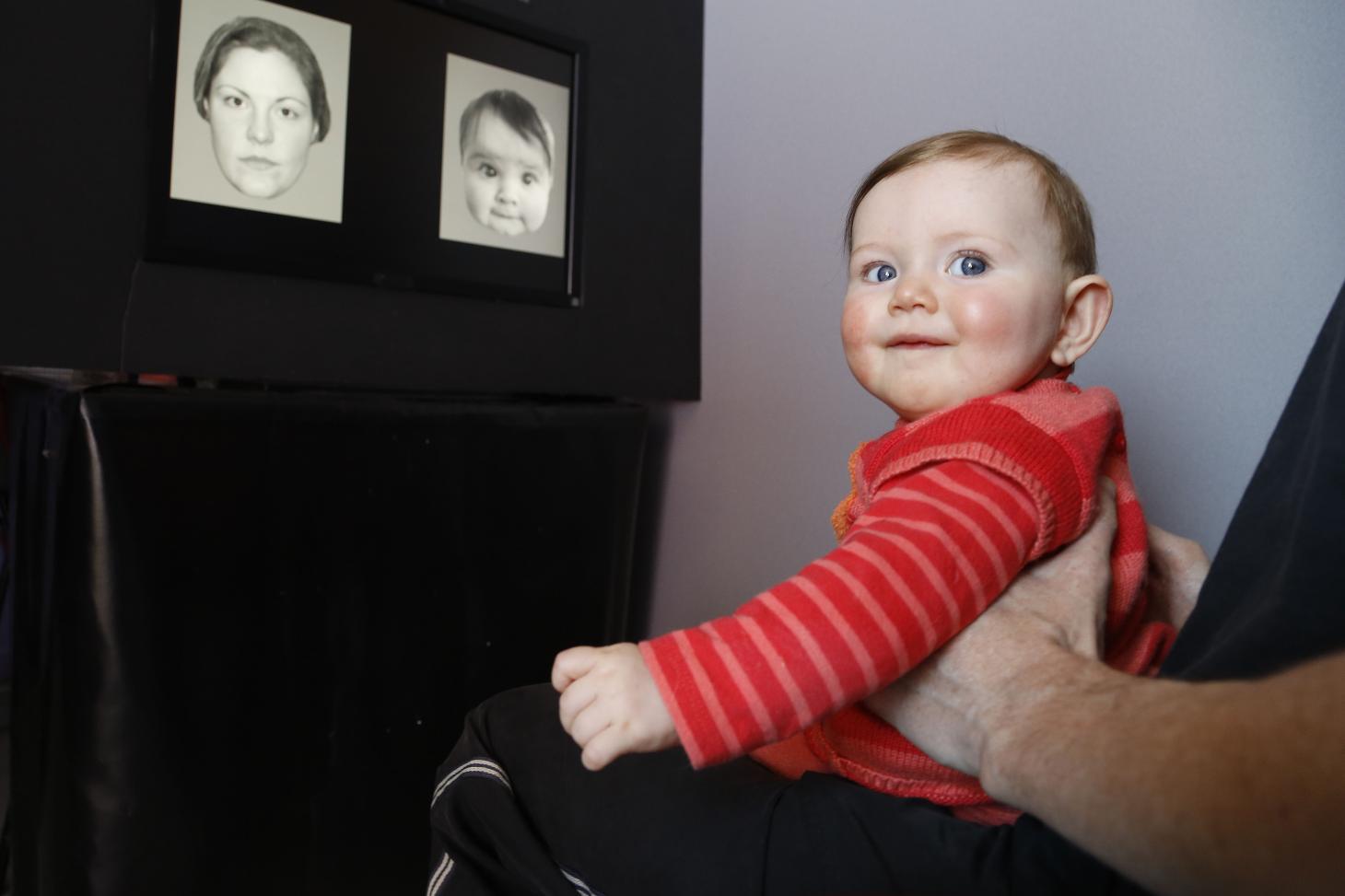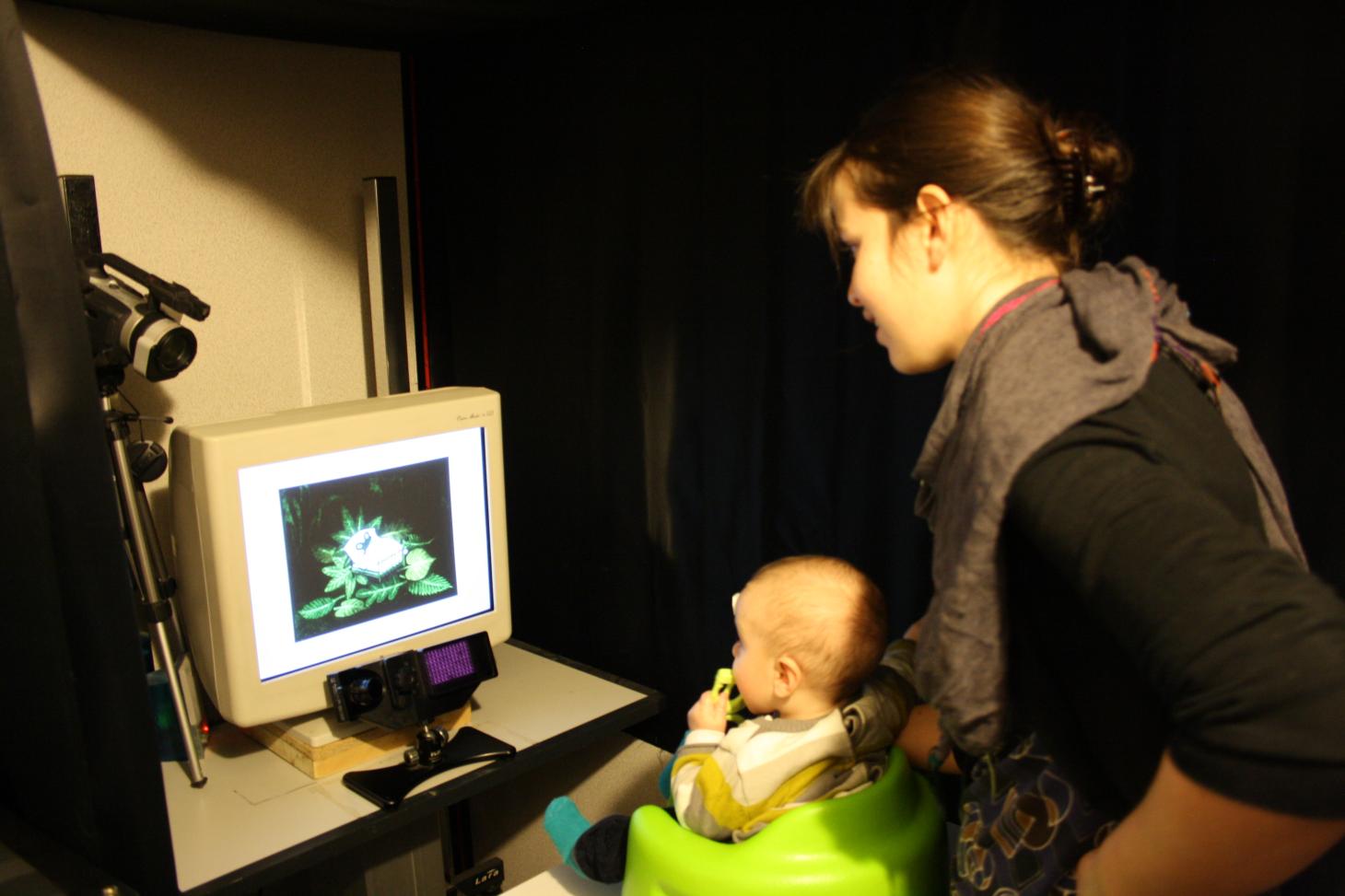- Share
- Share on Facebook
- Share on X
- Share on LinkedIn
Investigating babies’s looking preference
We employ the "relative fixation time » method in which we simultaneously present babies two images on a screen, one on the right and one on the left. Babies are comfortably seated in a baby seat. With a video camera we compare the time spent looking at each image. This way, we can determine whether babies prefer looking at one image rather than the other, and therefore whether they perceive a difference between the two images.
Studying babies’ reaction to novelty
The « habituation and reaction to novelty" method is based on a universal principle: our gradual disinterest when presented with a familiar scene or object for a while and our renewed attention for a new novel scene/object (e.g.,when the sign of a store on our daily route to work has changed). More specifically, this method consists in exposing the baby to the same picture several times in a row until he/she is familiarized and consequently becomes less and less interested in it. After this habituation phase, we move on to the test phase, which consists in presenting a novel picture. If the baby's attention increases, we conclude that he perceives the image as new. While we use this method of habituation and reaction to examine visual attention to novelty, one can use it to test other sensory modalities such as touch, hearing or olfaction.
Linking events with one another
The « contingency » method is based on our ability to establish a link between two events when they occur together. For example, each time a baby makes a specific gesture or looks in the direction of an object or a place, the experimentator can trigger a specific event (e.g., a sound is emitted, an image appears where the baby is looking). This way, babies start associating a specific event to a sound. During the test phase, we measure infants’ body or eye movements using a special camera.
With this method, we can study which conditions benefit the development and maintaining of a link between two events.


- Share
- Share on Facebook
- Share on X
- Share on LinkedIn
